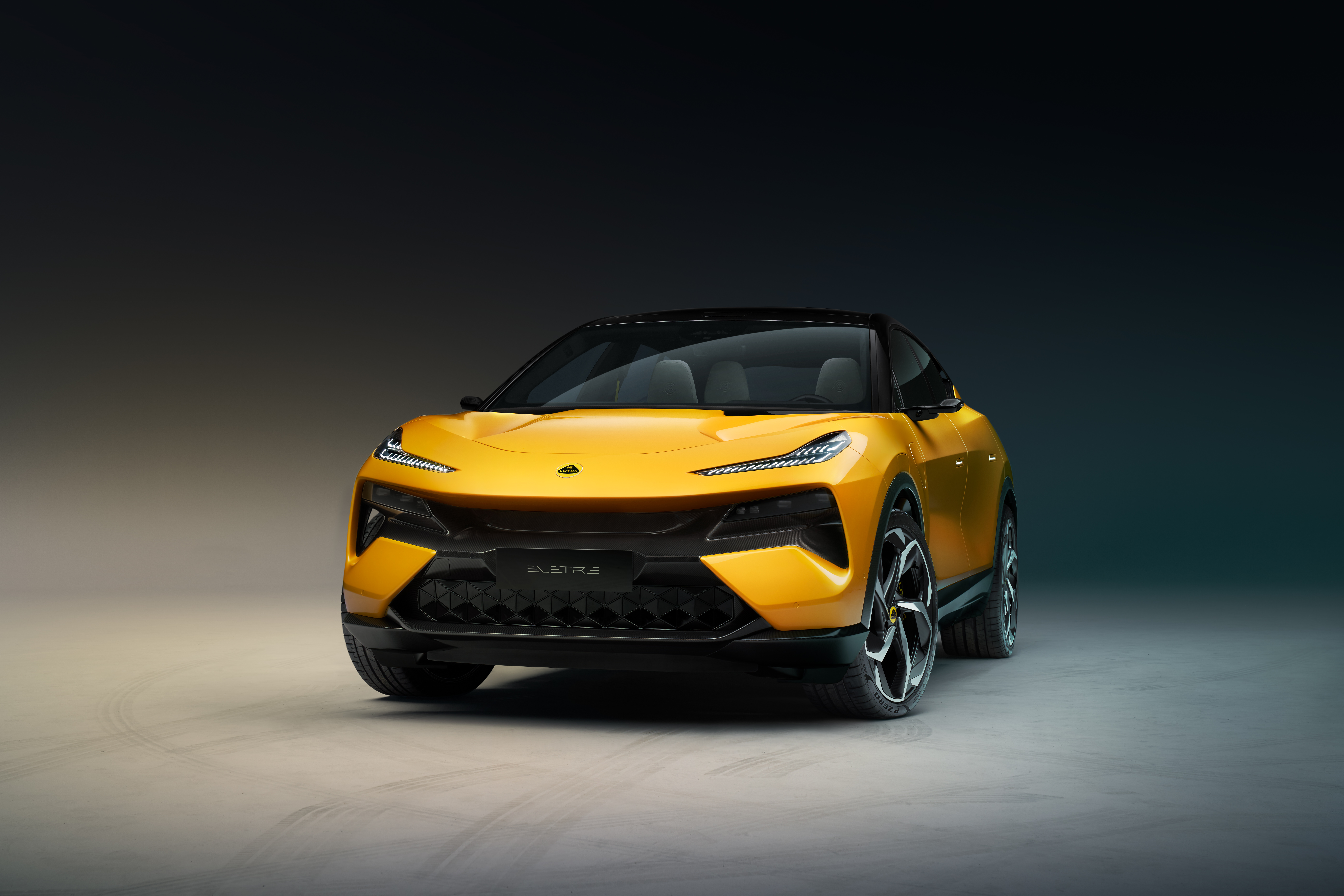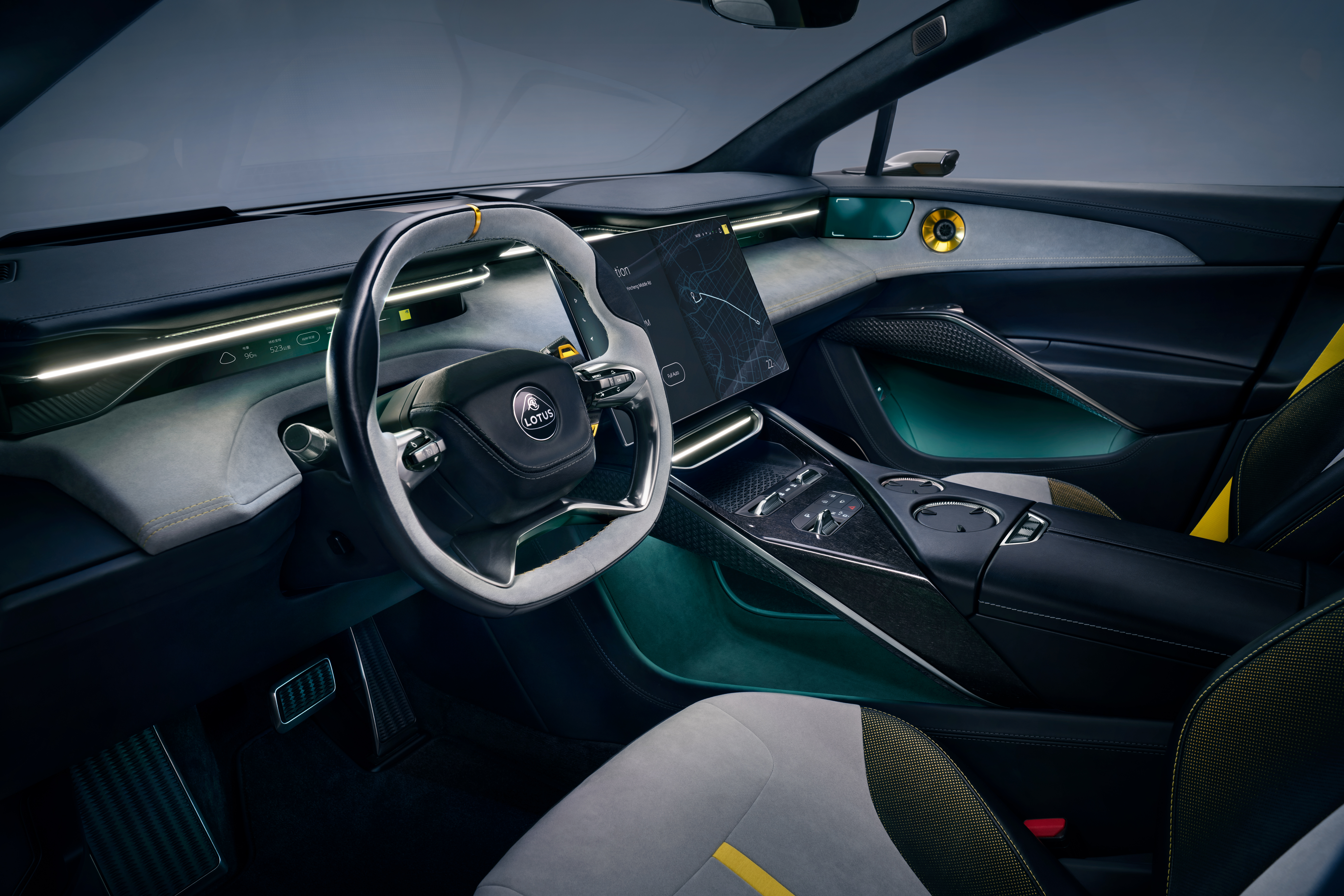The Eletre is a new icon from Lotus. It is the latest in a long line of Lotus road cars whose name begins with the letter E, and means ‘Coming to Life’ in some Eastern European languages. It’s an appropriate link as the Eletre marks the start of a new chapter in the history of Lotus – the first accessible EV and the first SUV.
- All-new and all-electric Hyper-SUV from Lotus
- Bold, progressive and exotic, with iconic sports car DNA evolved for the next generation of Lotus customers
- The soul of a Lotus with the usability of an SUV
- “A momentous point in our history” – Matt Windle, MD, Lotus Car
- “The Eletre, our Hyper-SUV, is for those who dare to look beyond the conventional and marks a turning point for our business and brand” – Qingfeng Feng, CEO, Group Lotus
- First of three new Lotus lifestyle EVs in next four years, with design language inspired by world’s first British EV hypercar, the award-winning Lotus Evija
- ‘Born British, Raised Globally’ – UK-led design, with engineering support from Lotus teams around the world
- Carved by air: unique Lotus design ‘porosity’ means air flows through the vehicle for improved aerodynamics, speed, range and overall efficiency
- Power outputs starting at 600hp
- 350kW charge time of just 20 minutes for 400km (248 miles) of driving, accepts 22kW AC charging
- Target driving range of c.600km (c.373 miles) on full charge
- Eletre joins exclusive ‘The Two-Second Club’ – capable of 0-100km/h (0-62mph) in less than three seconds
- Most advanced active aerodynamics package on any production SUV
- World-first deployable LIDAR technology in a production car to support intelligent driving technologies
- Extensive use of carbon fibre and aluminium for weight reduction throughout
- Interior includes highly durable man-made textiles and sustainable lightweight wool blends
- Manufacturing at all-new hi-tech facility in China to start later this year
Exterior design: daring and dramatic
Design of the Lotus Eletre has been led by Ben Payne. His team has created a daring and dramatic new model with a cab-forward stance, long wheelbase and very short overhangs front and rear. Creative freedom comes from the absence of a petrol engine under the bonnet, while the short bonnet echoes the styling cues of Lotus’ iconic mid-engined layout. Overall, there’s a visual lightness to the car, creating the impression of a high-riding sports car rather than an SUV. The ‘carved by air’ design ethos which inspired the Evija and Emira is immediately obvious.
Interior design: a new level of premium for Lotus
The Eletre takes Lotus interiors to an unprecedented new level. The performance-oriented and technical design is visually lightweight, using ultra-premium materials to deliver an exceptional customer experience. Shown with four individual seats, this is available to customers alongside the more traditional five-seat layout. Above, a fixed panoramic glass sunroof adds to the bright and spacious feeling inside.
Infotainment and technology: a world-class digital experience
The infotainment experience in the Eletre sets new standards in the automotive world, with pioneering and innovative use of intelligent technologies. The result is an intuitive and seamless connected experience. It is a collaboration between the design team in Warwickshire and the Lotus team in China, who have huge experience in the fields of User Interface (UI) and User Experience (UX).
Below the instrument panel a blade of light runs across the cabin, sitting in a ribbed channel that widens at each end to create the air vents. While it appears to be floating, the light is more than decorative and forms part of the human machine interface (HMI). It changes colour to communicate with occupants, for example, if a phone call is received, if the cabin temperature is changed, or to reflect the vehicle’s battery charge status.
Below the light is a ‘ribbon of technology’ which provides the front seat occupants with information. Ahead of the driver the traditional instrument cluster binnacle has been reduced to a slim strip less than 30mm high to communicate key vehicle and journey information. It’s repeated on the passenger side, where different information can be displayed, for example, music selection or nearby points of interest. Between the two is the latest in OLED touch-screen technology, a 15.1-inch landscape interface which provides access to the car’s advanced infotainment system. It automatically folds flat when not required. Information can also be displayed to the driver via a head-up display featuring augmented reality (AR) technology, which is standard equipment on the car.
Post time: Dec-08-2023










